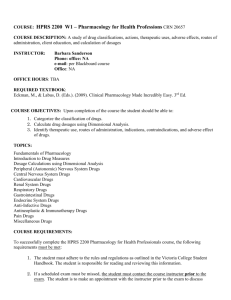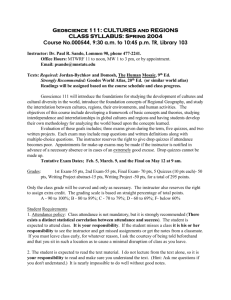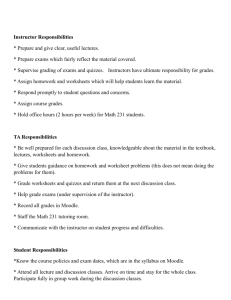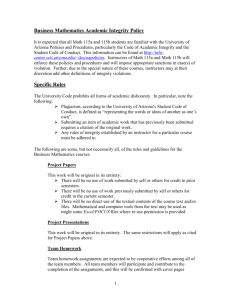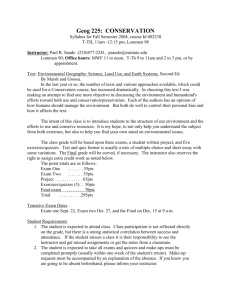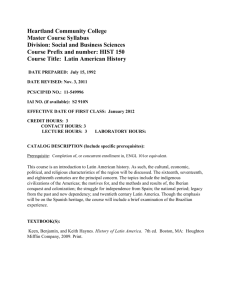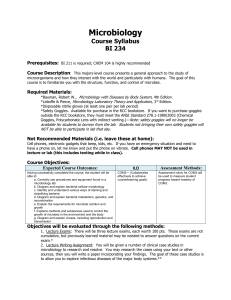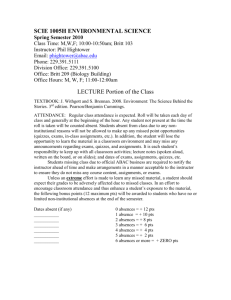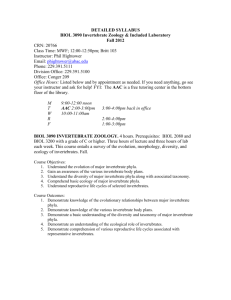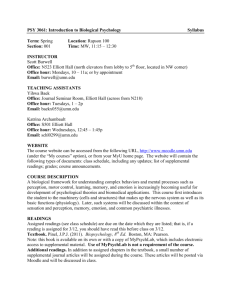Geos 310: Geography of the US & Canadada
advertisement
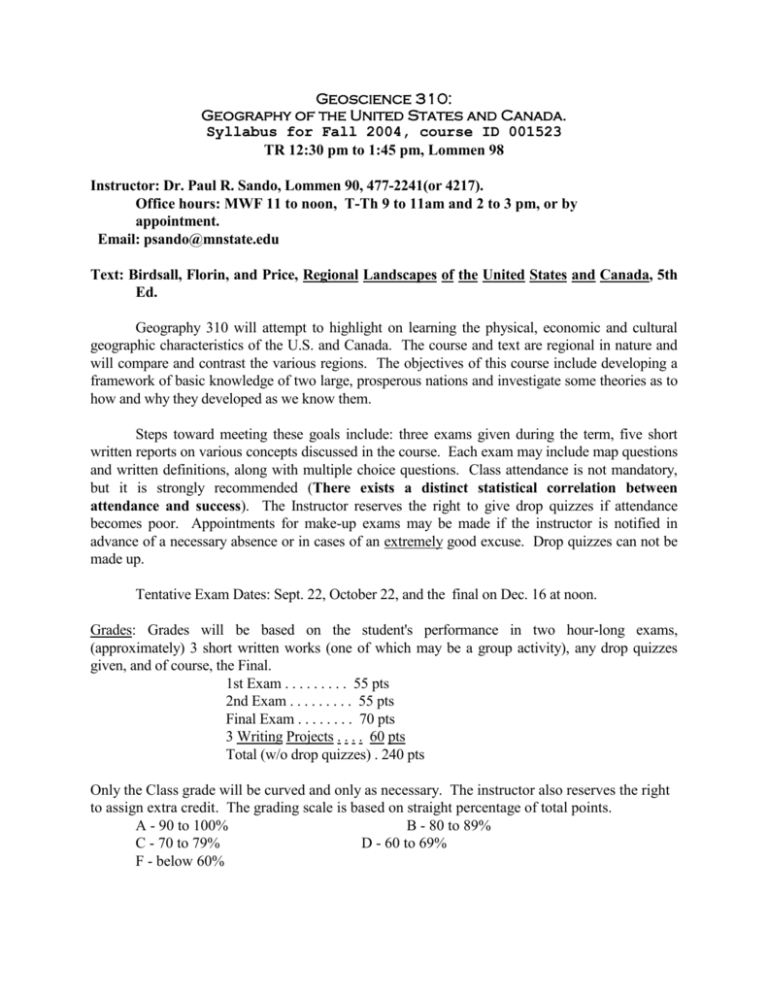
Geoscience 310:
Geography of the United States and Canada.
Syllabus for Fall 2004, course ID 001523
TR 12:30 pm to 1:45 pm, Lommen 98
Instructor: Dr. Paul R. Sando, Lommen 90, 477-2241(or 4217).
Office hours: MWF 11 to noon, T-Th 9 to 11am and 2 to 3 pm, or by
appointment.
Email: psando@mnstate.edu
Text: Birdsall, Florin, and Price, Regional Landscapes of the United States and Canada, 5th
Ed.
Geography 310 will attempt to highlight on learning the physical, economic and cultural
geographic characteristics of the U.S. and Canada. The course and text are regional in nature and
will compare and contrast the various regions. The objectives of this course include developing a
framework of basic knowledge of two large, prosperous nations and investigate some theories as to
how and why they developed as we know them.
Steps toward meeting these goals include: three exams given during the term, five short
written reports on various concepts discussed in the course. Each exam may include map questions
and written definitions, along with multiple choice questions. Class attendance is not mandatory,
but it is strongly recommended (There exists a distinct statistical correlation between
attendance and success). The Instructor reserves the right to give drop quizzes if attendance
becomes poor. Appointments for make-up exams may be made if the instructor is notified in
advance of a necessary absence or in cases of an extremely good excuse. Drop quizzes can not be
made up.
Tentative Exam Dates: Sept. 22, October 22, and the final on Dec. 16 at noon.
Grades: Grades will be based on the student's performance in two hour-long exams,
(approximately) 3 short written works (one of which may be a group activity), any drop quizzes
given, and of course, the Final.
1st Exam . . . . . . . . . 55 pts
2nd Exam . . . . . . . . . 55 pts
Final Exam . . . . . . . . 70 pts
3 Writing Projects . . . . 60 pts
Total (w/o drop quizzes) . 240 pts
Only the Class grade will be curved and only as necessary. The instructor also reserves the right
to assign extra credit. The grading scale is based on straight percentage of total points.
A - 90 to 100%
B - 80 to 89%
C - 70 to 79%
D - 60 to 69%
F - below 60%
Student Requirements
1. The student is expected to attend class, it is your responsibility. If the student misses a class
it is their responsibility to get missed assignments or notes.
2. Make-ups The student is expected to take all exams and quizzes. If you expect to make-up an
Exam, I need to know the reason for the absence in advance. If it is an emergency on test day,
call and leave a message at x2241, and be ready to present your excuse at the next class period.
Make-ups of exams or quizzes must be completed within one-week of the student's return to
class. If you should have a problem, please see me. I can be flexible if I must.
3. The student is expected to read the text material. I do not lecture from the text alone, so it is
the student's responsibility to read and make sure they understand the text. (Hint: ask the
instructor questions if you don't understand.) NOTES It is almost impossible to do well in this
course without taking decent notes. Be sure to save everything, you never know when they may
be an excellent reference.
4. Exams will be conducted in class based upon the material covered. This includes text material
and any material the instructor deems necessary from his lectures and the class discussions. I
will conduct a review of important points and topics in the class time prior to the exam. Quizzes
can be given over any material covered or assigned. I may have practice quizzes given before
exams.
5. Students with disabilities who believe they may need an accommodation in this class are
encouraged to contact Greg Toutges, Coordinator of Disability Services at 477-2652 (phone) or
477-2047 (TTY), CMU 222 as soon as possible to make accommodations.
6. Writing Projects: The students will be expected to complete three short writing
projects (one may be a group activity). Each project shall consist of at least
FOUR, double-spaced pages of text (This does not include bibliography, maps,
graphs, and must have reasonable {one inch} margins all around), at least one
map, and any other relevant tables or graphics. The topic must be something
relating to concepts of Cultural-Regional Geography recently discussed or
assigned in class and must be approved prior to writing by the instructor.
Otherwise, the topic is up to the student's discretion. Instructor's approval is
necessary in order to avoid doubling up on a subject, to address or avoid problems
early on before the writing begins, and lastly, to allow the student a good chance
of finding reference materials. The instructor will be available to help students
locate and secure references if they so desire. You must have a minimum of
THREE references per paper. It is expected that the student will communicate
well and will present a decently edited paper. References should be cited within
the text according to any major accepted format (Turabian, MLA, APA, etc.) and
should also be listed in a bibliography. Again, I am not particular in terms of
what format you use to annotate your paper, so long as you are consistent!
The projects are due as assigned by the instructor.
7. Lastly, this is a university course, and the students are expected to conduct themselves as
proper scholars. The University's policies concerning any academic dishonesty including
plagiarism are listed in your student handbook. If you use an author’s ideas, paraphrase, or
quote, always, ALWAYS, cite the source. If you are unsure as to how closely you can paraphrase
or when to cite material, PLEASE ASK ME! Let’s avoid any unnecessary unpleasantness.
Topics
Readings
A. Introduction to Regions and Themes
Ch. 1
B. Physical geography of North America
Ch. 2
1. Regional patterns and boundaries
2. physical controls on Humans
C. Foundations of Demographics and
Human Geography
D. The first settlements on the Continent
1. From colony to megalopolis
2. Eastern National Fringes
E. The North-East
1. The “RUST BELT”
Ch. 5
2. National Canada
3. The forgotten Northeast
F. Appalachia and the Deep South
1. Ozarkia and Appalachia
2. THE SOUTH
3. The Atlantic coastal margin
Ch. 3
Ch. 4
Ch. 6
Ch. 7
Ch. 8
Ch. 9
Ch.10
G. Agricultural Regions
Ch.11
H. Plains and Mountains
1. The Great Plains and Prairies
2. The Interior Mountains
3. The Southwest
Ch.12
Ch.13
Ch.14
I.
California and the Pacific Coast
1. California unto itself
2. Un-california
J. The Regional Fringes
1. The Northlands: Harsh Wonder
2. Paradise: Hawaii
Ch.15
Ch.16
Ch.17
Ch.18

